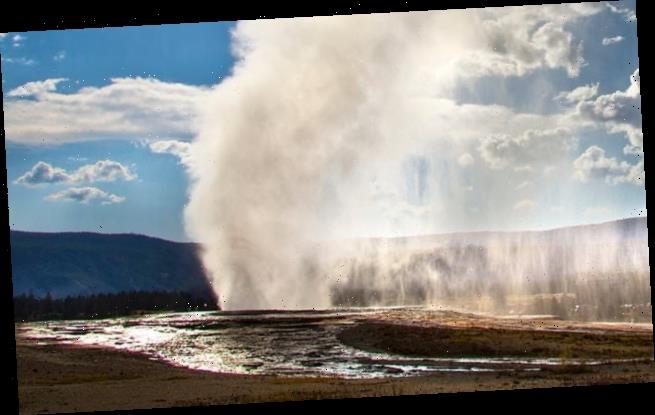Black hole: Brian Cox says we ‘know nothing’ about the centre
Black holes are areas of spacetime exhibiting gravity so extreme nothing – even light – can escape. Scientists have now significantly expanded awareness about black holes’ bizarre behaviour, following research simulating a phenomenon called “backreaction”.
University of Nottingham scientists used their simulation of a black hole, involving a specially-designed water tank, for the study.
We have demonstrated that analogue black holes, like their gravitational counterparts, are intrinsically backreacting systems
Dr Sam Patrick
The team’s laboratory simulation was the first to demonstrate how black holes’ evolution are a direct consequence of their surrounding fields.
The researchers used a water tank simulator consisting of a draining vortex.
This is almost identical to those formed when a plug is pulled out of a bath tub.
This act in fact imitates a black hole as waves encroaching too close to the drain are dragged down the plug hole.
We will use your email address only for sending you newsletters. Please see our Privacy Notice for details of your data protection rights.
Surprisingly simple systems like these have in recent years grown increasingly-popular as methods for testing complex gravitational phenomena.
For example, Hawking Radiation has also been observed in an analogue black hole experiment involving quantum optics.
Researchers using this plug hole technique have for the first time demonstrated when waves are sent into an analogue black hole, the properties of the black hole itself can alter significantly.
The mechanics responsible for this effect in this simulation has a remarkably-simple explanation.
When waves approach the drain, they force more water down the plug hole causing the total amount of water contained in the tank to decrease.
This results in a change in the water height, which in the simulation corresponds to a change in the black hole’s properties.
Dr Sam Patrick from the University of Nottingham School of Mathematical Sciences, and lead author, revealed the study’s “unexpected” ramifications.
He said: “For a long time, it was unclear whether the backreaction would lead to any measurable changes in analogue systems where the fluid flow is driven, for example, using a water pump.
DON’T MISS
Black hole shock: Scientist’s dire warning to humans [VIDEO]
Asteroid apocalypse: Scientist warns of ‘city-destroying’ space rock [OPINION]
Why ‘Trillion tonne rock hurtling towards Earth’ was ‘bad news’ [EXPLAINED]
“We have demonstrated that analogue black holes, like their gravitational counterparts, are intrinsically backreacting systems.
“We showed that waves moving in a draining bathtub push water down the plug hole, modifying significantly the drain speed and consequently changing the effective gravitational pull of the analogue black hole.
“What was really striking for us is that the backreaction is large enough that it causes the water height across the entire system to drop so much that you can see it by eye. This was really unexpected.
“Our study paves the way to experimentally probing interactions between waves and the spacetimes they move through.
“For example, this type of interaction will be crucial for investigating black hole evaporation in the laboratory.”
The research’s release has coincidental with a study reporting how colliding galaxies may actually “stave” their black hole inhabitants.
The study, also largely-based on simulations, centres on the idea of the galactic gas reservoir and the galactic nuclei.
During these head-on galaxy collisions, something very unusual can happen in the galactic nuclei.
Dr Yohei Miki, research associate at the University of Tokyo and lead author, said: “At the heart of most galaxies lies a massive black hole, or MBH.
“For as long as astronomers have explored galactic collisions, it has been assumed that a collision would always provide fuel for an MBH in the form of matter within the nucleus.
“And that this fuel would feed the MBH, significantly increasing its activity, which we would see as ultraviolet and X-ray light amongst other things.
“However, we now have good reason to believe that this sequence of events is not inevitable and that in fact, the exact opposite might sometimes be true.”
Source: Read Full Article






